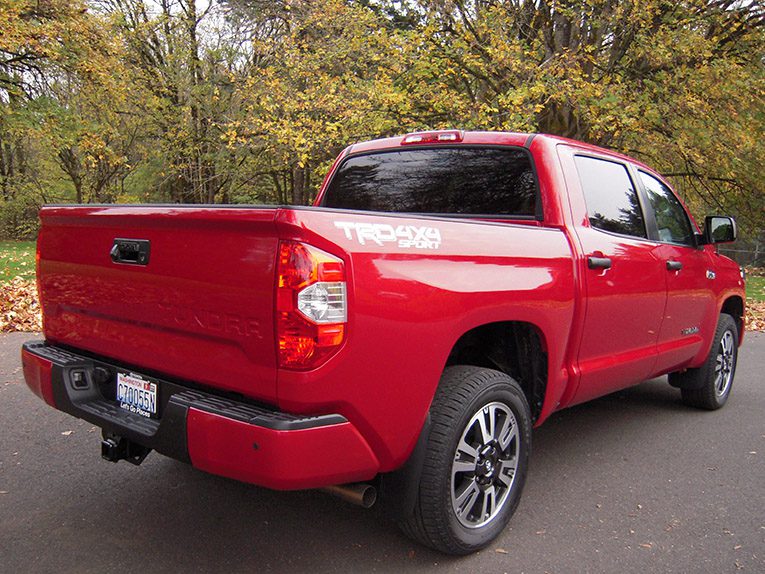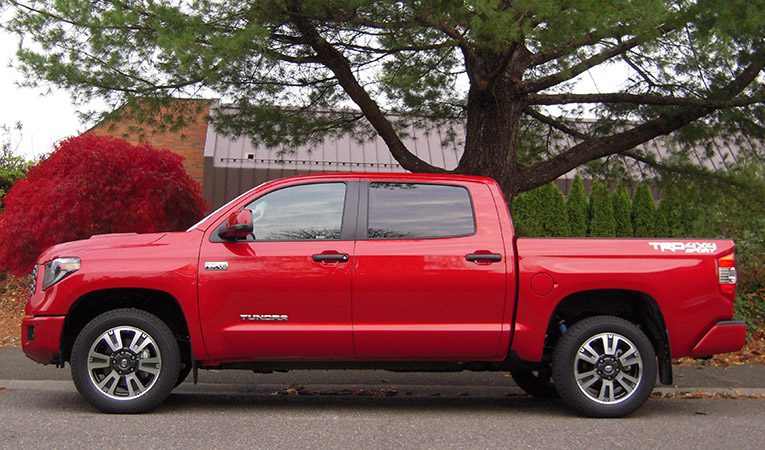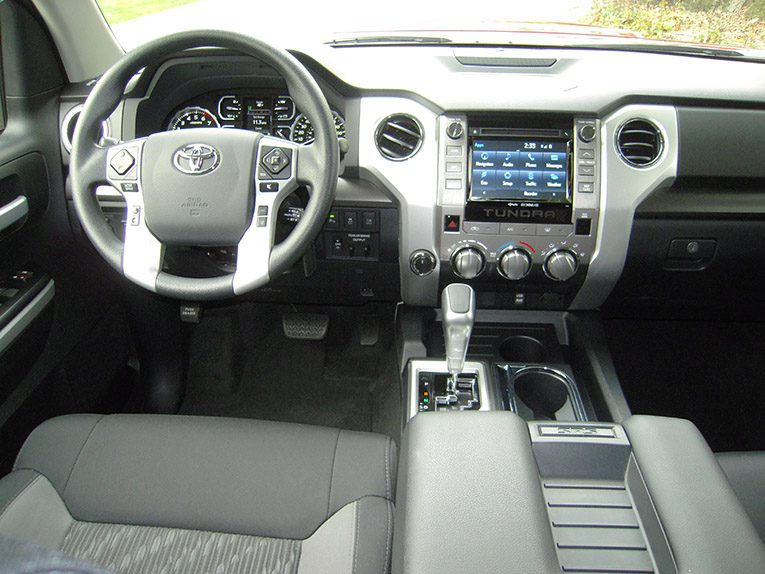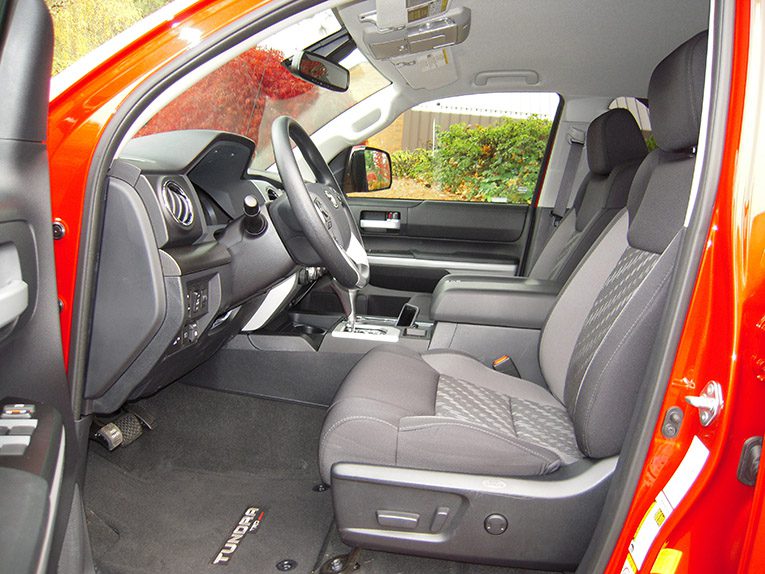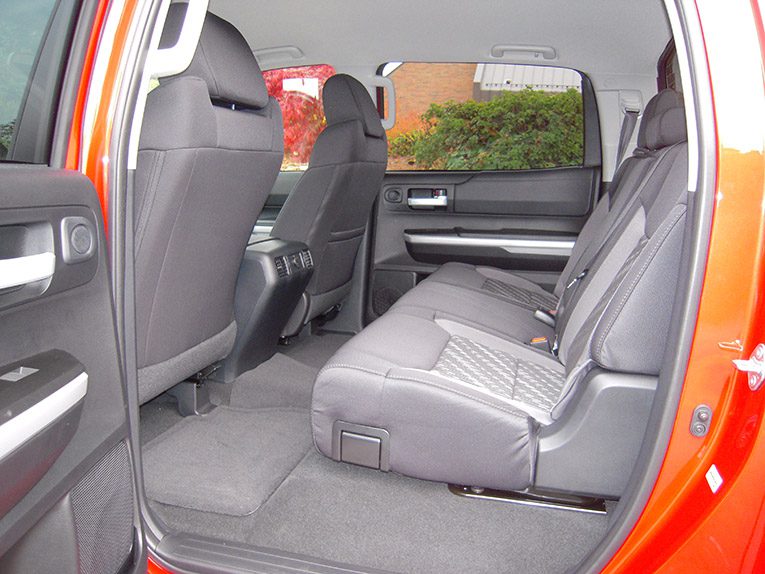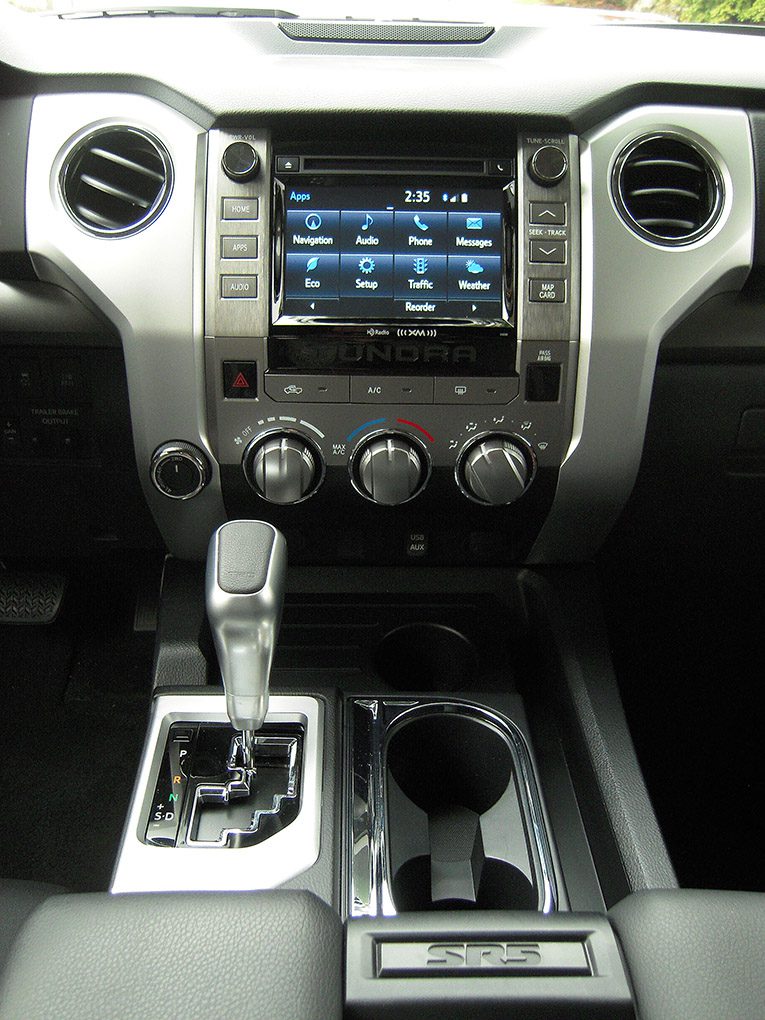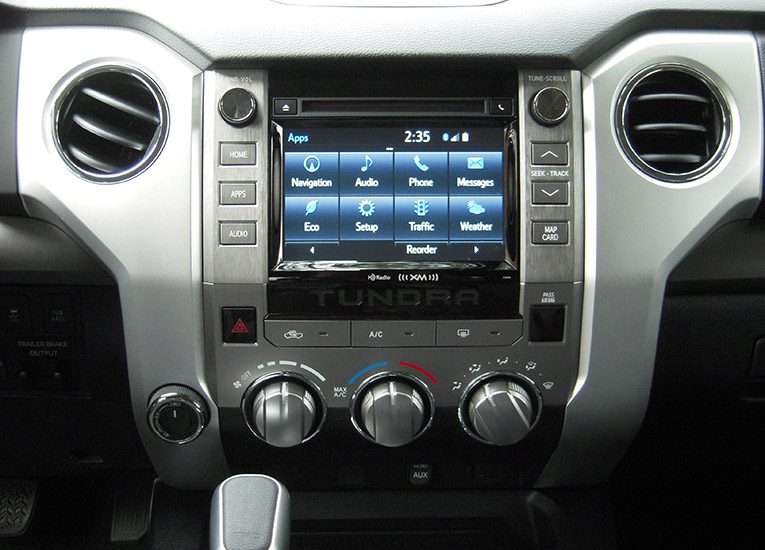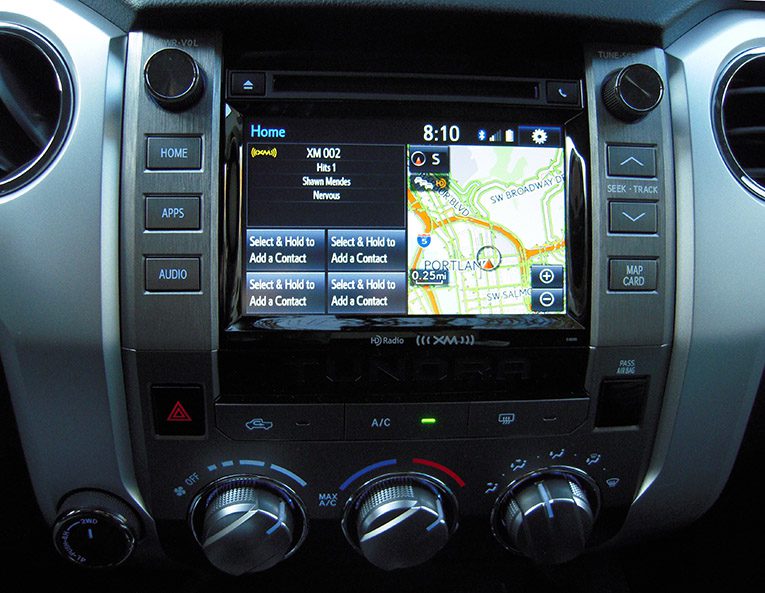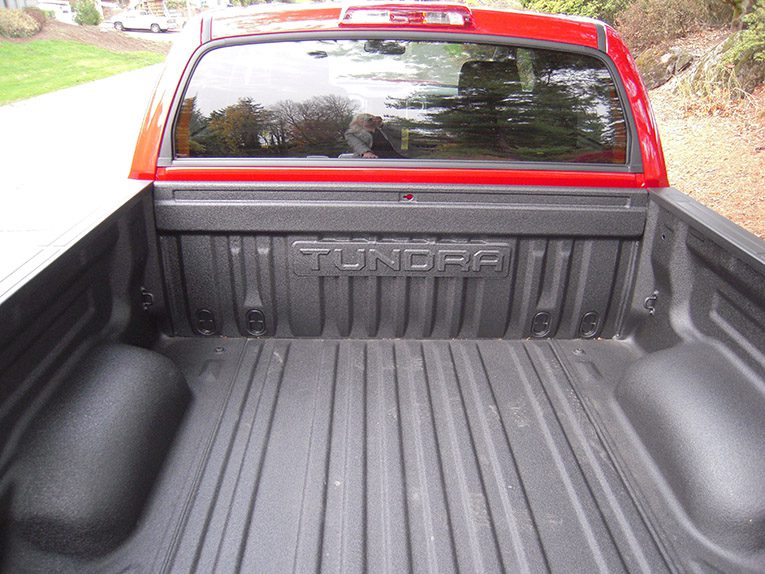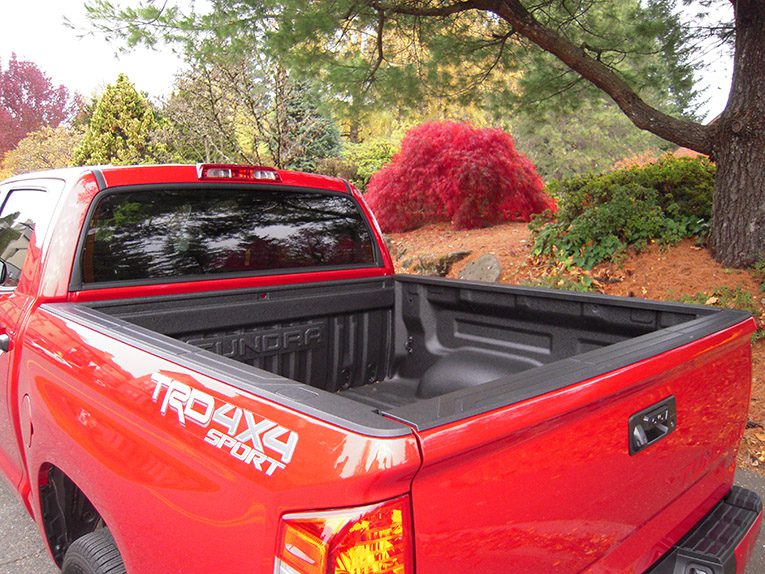Full size pick-ups need to be able to do it all these days. Besides being a work truck, they need to be good at hauling and off-roading, and comfortable enough to be a daily driver to take the kids to school and you to work. Oh, yeah, and they better have upscale interiors with the latest tech.
The Tundra lags behind the competition when it comes to being a well-rounded pick-up. For one thing, it’s a bit long in the tooth. The Tundra was introduced in 2007, got refreshed in 2014 and gets some updates for 2019. But there aren’t enough changes to make it competitive with offerings from Ford, Ram and Chevy. Still, it may have everything you need in a work truck.
The 2019 Tundra is available in five trims: SR, SR5, Limited, Platinum and the 1794 Edition TRD Pro. Starting prices range from $31,420 to $50,430. You can choose from two body styles, the four-door Double Cab crew cab or the larger CrewMax, and three bed lengths. Double Cab models come with either a 6.5-foot standard-bed or 8.1-foot long-bed configuration. CrewMax models get a 5.5-foot bed. The Tundra is available with two-wheel- or four-wheel-drive.
You can also add packages to customize your truck. The SX Package is available on the SR5 Double Cab. The TRD Sport is based on the SR5, and the TRD Off-Road Package adds upgrades you need for off-highway driving.
Two V8 engines are available: a 4.6-liter that makes 310 horsepower and 327 pound-feet of torque, and a 5.7-liter that generates 381 horses and 401 pound-feet. Both engines are paired with a six-speed electronically controlled automatic transmission. Rivals offer V8s that have more power, as well as turbocharged V6 and turbo-diesel engines that can provide better fuel efficiency.
My tester has the larger engine. It easily propels this nearly three-ton beast down the road. While some pick-ups are easy to drive and handle like a smaller vehicle, the Tundra feels like a big truck. The ride is stiffer and rougher than you’ll find on several rivals.
Fuel efficiency is below average for the class. EPA ratings for my tester are 13 mpg city and 17 mpg highway with a combined rating of 14. I got 13 mpg during my week with a mix of city and highway driving.
When properly equipped, the 5.7-liter V8Tundra can tow up to 10,200 pounds. Other trucks can do a bit better.
The huge cabin can easily accommodate five adults who will enjoy limo-like legroom in the second row. Getting in and out can be a bit of a challenge as there are no running boards on my tester. No dresses or skirts this week!
Controls for audio and climate are easy to reach. Toyota’s Entune system works with an app on your phone to control several functions. It works fine but other systems are more user-friendly. Android Auto and Apple CarPlay are not available.
Standard features on all Tundras include Entune Audio featuring a 6.1-inch touchscreen display; Bluetooth, AM/FM CD Player; aux media input; USB media port; hands-free phone capability; Siri Eyes Free; advanced voice recognition, windshield wiper de-icer, front and rear mudguards, power windows and door locks, and heated and power outside mirrors.
Available features include leather-trimmed seating surfaces, premium leather-trimmed seating, wood-style interior trim, ultra-suede accents, dual zone climate control, 10-way power driver seat, 12-way power driver’s seat with memory, 4-way power passenger seat, and available power tilt/slide moonroof with sliding sunshade (CrewMax only), 12-speaker touch-screen Entune Premium JBL Audio system with Navigation and App Suite, power moonroof, Blind Spot Monitor with Rear Cross Traffic Alert, front and rear parking sonar, auto-dimming rearview mirror with compass, and a HomeLink universal garage door opener.
Toyota’s Safety Sense P is now standard across the Tundra line-up. It includes a pre-collision system with pedestrian detection function, lane departure alert, dynamic radar cruise control, and automatic high beams. The standard Toyota Star Safety System for Tundra includes Vehicle Stability Control, Traction Control, Anti-lock Braking System, Electronic Brake-force Distribution, Brake Assist, and Smart Stop Technology brake override technology.
There’s lots of space for hauling stuff in the cabin. The rear seats split/fold 60/40, and the enormous center console has room for phones and tablets or other personal items.
The good:
Available in several different configurations
Roomy cabin with lots of passenger space
Lots of standard safety features including Toyota’s Safety Sense P
The not-so-good:
Rough and tough driving dynamics
Subpar fuel efficiency
Can’t tow and haul as much as rivals
Less tech than rivals
No Apple CarPlay and Android Auto
Pricing info:
My tester starts at $40,145. Entune Premium Audio with integrated navigation and app suite, seven-inch touchscreen with backup camera, and satellite radio are $525. The TRD Sport Package is $3,275 and adds 20-inch six-spoke Alloy wheels, sport-tuned Bilstein shock absorbers, TRD front and rear anti-sway bars, color keyed accents, LED headlights and foglights, TRD Sport floor mats, TRD shift knob, hood scoop and TRD Sport decals. The SR5 Upgrade Package is $945 and adds a larger 38-gallon fuel tank, replaces front bench seating with front bucket seats with power driver seat with power lumbar support, adds front center console, Urethane shift lever and knob, tilt and telescoping Urethane steering wheel, three front cup holders, and an anti-theft system with alarm and engine immobilizer. TRD Sport Convenience Package is $1,000 and adds front and rear parking assist sonar, blind spot monitor and rear cross traffic alert. Spray-on bedliner is $579. Delivery fee is $1,395 bringing the grand total to $47,864.
Bottom line:
If you’re primarily looking for a full-size work truck that can also tow, the Tundra can get the job done. But if you want more refinement, an upscale interior and the latest tech, you may want to look elsewhere.



